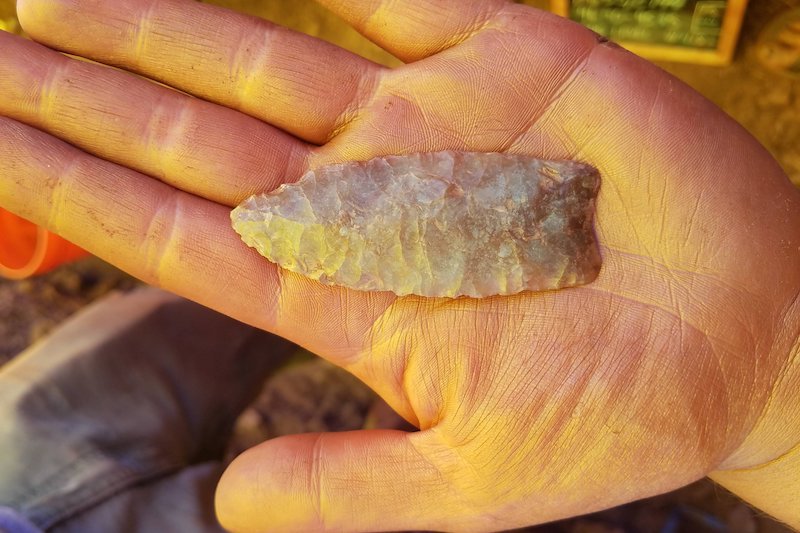This makes the Powars II site at Sunrise the oldest documented red ochre mine in all of North and South America, and probably the oldest known mine of any kind.

The excavations, which were completed shortly before archaeologist George Frison’s death in 2020, confirmed the theories he developed based on research he began at the site in 1986.
The paper’s lead author is Spencer Pelton, a Wyoming State archaeologist who was involved in the Powars II project when he was a UW doctoral student in 2016.
“We have conclusive evidence that this site was used by early Paleo-Indians as far back as 12,840 years ago, and was used by the first Americans for about 1,000 years,” Pelton said. “It is gratifying that after decades of work by many people, including Dr. Frison, who learned about the site in the early 1980s and took part in the research until his death, we have finally been able to confirm the importance of the Powars II site.”
Red ochre, also known as hematite, performed a wide variety of functions in Paleo-Indigenous societies, including as a pigment in rituals. It has been found in ancient tombs, campsites and hunting grounds in the Great Plains, Rocky Mountains and beyond. The Powars II site is the only red ochre quarry identified in the North American archaeological record in northern southern Mexico and one of only five such quarries identified throughout the Americas.
Artifacts previously discovered at the site of Powars II include Clovis tips, believed to belong to the first inhabitants of North America, along with other arrowheads, tools, and shell beads.
The 2017-2020 excavation, led by Pelton — a 6-by-1-meter trench that split a previously undocumented quarry in half — uncovered several thousand Paleo-Native artifacts, along with many well-preserved animal bones and horns. Animal bones and horns were used to remove the red ochre from the stove.
According to the article, the arrowheads come from numerous places in the area, including as far away as the Edwards Plateau in Texas. This makes it likely that the red ochre found at archaeological sites in the American mid-American continent came from the Powars II quarry.
“Beyond the status of a quarry, the Powars II collection of artifacts is one of the densest and most diverse of those ever discovered in the early Paleo-Native records of the Americas,” Pelton said. The site contains, among other distinctions, more than 30 chipped stone tools per square meter, some of the oldest canine remains from an American archaeological site, and rare artifacts.
The researchers say the evidence discovered so far suggests that the quarry was used in two main periods. In the first use, which dates back 12,840 years and lasted several hundred years, people not only extracted red ochre using bones and horns as tools, but also manufactured and repaired weapons along with other activities.
After a hiatus of a century or more, the area was inhabited by people mining red ochre and leaving heaps of artifacts in a pit.
“Excavating the rest of the area’s estimated 800 square feet will certainly reveal complexity not captured by our sample,” the researchers said.
Pelton, S. R., Becerra-Valdivia, L., Craib, A., Allaun, S., Mahan, C., Koenig, C., … & Frison, G. C. (2022). In situ evidence for Paleoindian hematite quarrying at the Powars II site (48PL330), Wyoming. Proceedings of the National Academy of Sciences, 119(20), e2201005119.


